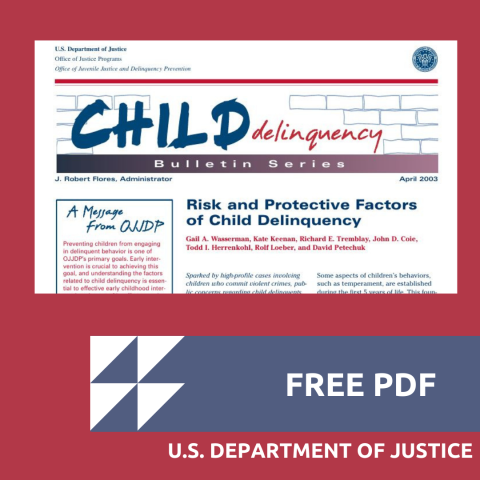Risk and Protective Factors of Child Delinquency
U.S. Department of Justice Bulletin
This bulletin from the U.S. Office of Juvenile Justice and Delinquency Prevention examines risk and protective factors associated with child delinquency under age 13, highlighting that early-onset delinquency often leads to more serious, chronic offending later in life. It categorizes these factors across four domains—individual, family, peer, and school/community—and explains how elements like early aggression, ADHD, poor impulse control, unstable or violent family environments, association with delinquent peers, weak school bonding, and neighborhood disadvantage increase delinquency risk. Conversely, protective factors such as strong parental involvement, positive peer relationships, empathy, cognitive skills, and effective school engagement can buffer against these risks . The bulletin emphasizes that successful interventions must be multifaceted and early, combining family-based programs, peer-skills training, and school-community initiatives to steer at-risk youth toward healthier developmental paths.
Developers
U.S. Department of Justice
Office of Justice Programs
Office of Juvenile Justice and Delinquency Prevention
